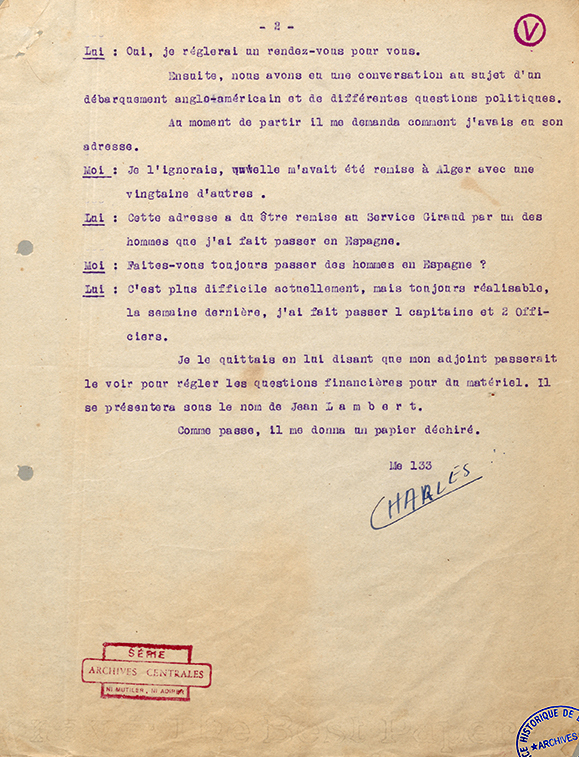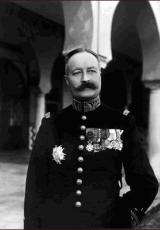Around Father Blanc: the infiltration of a network
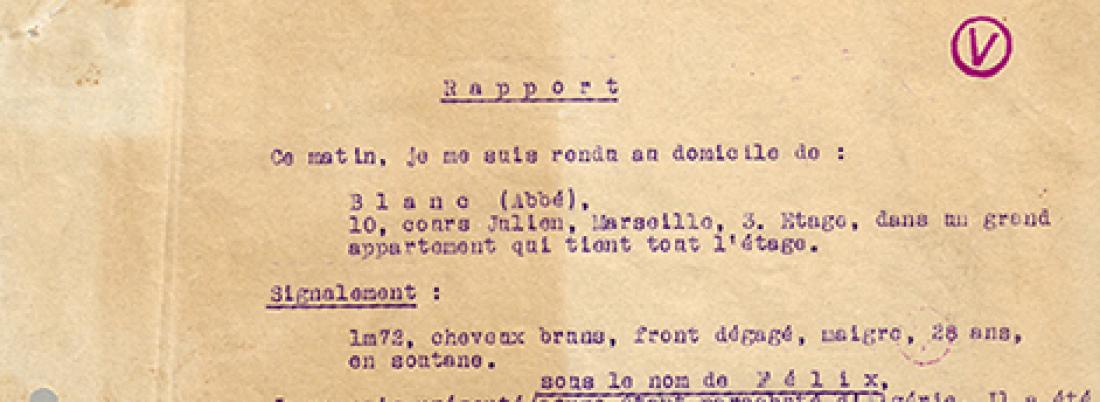
Father (”abbé”) Blanc, born on 21 June 1903 in Maillane (Bouches-du-Rhône), the former curate of Sorgues in Vaucluse and La Capelette in Marseille, managed to assemble a small mixed team of resistance members at the beginning of 1943. The special services documents about the Blanc case illustrate very precisely the methods of infiltration, investigation and then repression used against the Resistance.
Father Blanc's work included organising crossings into Spain. Denounced in March 1943, he moved away from Marseille, returning to his home at 10 Cours Julien in the city centre at the end of April.
Félix and Jean Lambert: the infiltration of the network
On the morning of 18 August 1943, he received a visitor who introduced himself as Félix, who had been parachuted into France to organise the Resistance. Father Blanc, delighted to have made contact with Algiers and the staff of General Giraud, offered the use of his escape network to Spain, his 50 men and handful of weapons and the possibility of acquiring many more. But he was short of money. Félix conveniently announced that his deputy, Jean Lambert, would be arriving to ”settle the financial questions”.
Lambert presented himself at the priest's home on the afternoon of 19 August. Between 20 and 27 August, the two men visited 10 Cours Julien almost daily. They negotiated the purchase of several weapons and a forged identify card, for which they would pay cash. Father Blanc, meanwhile, provided details of his contacts and his projects. The two envoys from Algiers claimed to be working for a ”Captain Bruneteau”, who had also been parachuted into France, but who remained distinctly mysterious.
In fact, the pseudo-emissaries of General Giraud from Algiers were employed by the German services. According to their statements after the Liberation, they used the address book and passwords of Bruneteau (sometimes also known as Boretto or Bonetto), who had been arrested at the end of June 1943. In reality, according to the historical dictionary Les réseaux de résistance de la France combattante (the resistance networks of fighting France), this was Lieutenant-Colonel Émile Bonotaux, sent from Algiers and dropped on the Bronchite plot of land near Amboise on 23/24 June 1943. Arrested in Paris the following day, he was carrying a notebook containing addresses that was easy for the SD to exploit.
Félix was agent 133, whose real name was Léon Charles Brown, and Jean Lambert was the pseudonym of Jean Jalabert, agent 129. Both of them wrote reports after each encounter, signed Charles and Jean respectively, together with their registration numbers (see slideshow). Other sources reveal more about the affair, including the interrogations of SIPO-SD members and their French auxiliaries during the preparations for their trials before the Marseille Court of Justice. The operation was conducted by a Sonderkommando-AS led by Herbert Werth, liaising with Ernst Dunker-Delage of the Gestapo.
27 August 1943, the dragnet
Their goal was to widen the scope of their arrests as far as possible. Clearly both agents were looking for Resistance leaders, to whom they were imprudently introduced by Louis Blanc. For example, Jean met a certain Jeannot on 24 August, in the bar Chez vous in Rue Châteauredon, where a deal was being organised relating to forged papers. The following day, at the offices of the Messageries Maritimes merchant shipping company, he met Ferdinand Sasso and then Marcel Vigne, a socialist and battalion leader of the Armée secrète (AS, secret army).
Finally, the German services decided to organise a raid at a meeting organised by Father Blanc at his home on 27 August. Their intervention that evening was carefully planned. A new agent was introduced, Marcel, recently arrived from Algiers. This was Marcel Pavia, Arnaud, aged 38, a former leader of the Parti populaire français (PPF, French Popular Party) in Tunisia and then Paris and a member of the Sonderkommando-AS. Before about twenty people, Marcel provided information about a forthcoming landing and Charles demonstrated the use of a machine gun, before Dunker-Delage burst in with Antoine (Antoine Tortora, agent 101) and arrested everyone present. The operation continued into the night. Among the people taken to the SIPO-SD headquarters at 425 Rue Paradis were agents responsible for crossings into Spain, leaders of the AS, high school students who were keeping watch at the meeting, two young women who lived with Father Blanc and the son of one of these women. Several were brutally interrogated and further arrests took place until 30 August. The number of people questioned rose to 32, including another priest and a leader of the Franc-Tireur resistance movement.
Father Blanc, transferred to the Saint-Pierre prison and then to Fort Saint-Nicolas, was interned in Compiègne and deported to Buchenwald and then to Flossenburg, from where he eventually returned. He died in Aureille (Bouches-du-Rhône) in 1989. Most of the network's members, including the Thiers school students and Pierre Mouren, were deported and many of them died. Jacques Pillé survived to provide us with his description of the events.
The archives of the Bureau central de renseignements et d'action (BCRA, Central Bureau of Intelligence and Operations) supply the basis for a detailed chronology of the network's infiltration and the painstaking work carried out by the German services. They illustrate how the Gestapo wove their web with ruses and deception. But, beneath their superficial dryness, they reflect the particular view that French agents working for the occupier had of the resistance movements. The archives naturally require critical analysis and cross-referencing with other sources.
Robert Mencherini
Honorary professor of contemporary history,
research associate at UMR TELEMME,
member of the scientific and administrative committees of the Les Milles memorial,
president of the Provence-Alpes-Côte d'Azur on-line museum of the resistance (MUREL)
FOR MORE INFORMATION
The file on Father Blanc is part of a collection of Marseille SIPO-SD archives seized by the documentation bureau of the 14th military region at the end of the war. These archives will be classified under sub-series GR 28 P 6.
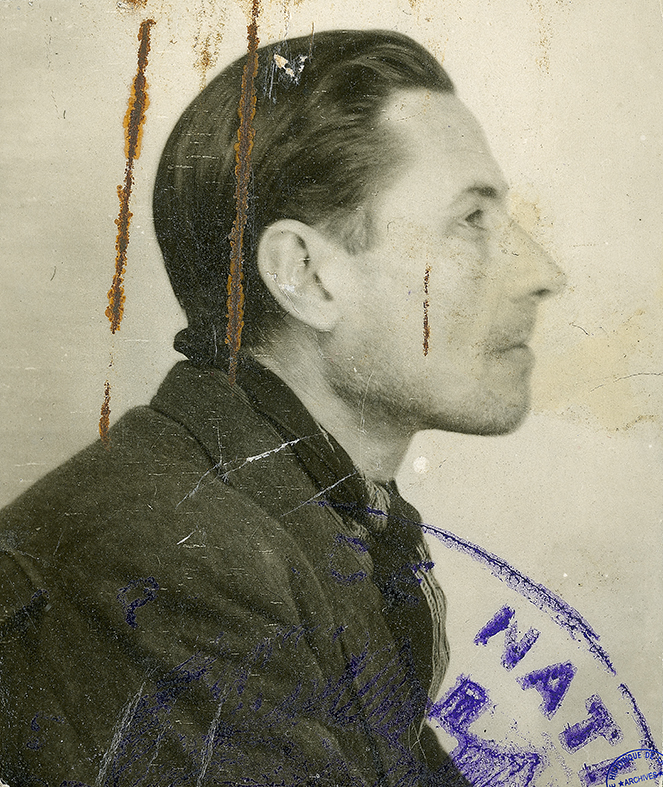
Abbé Blanc, sans date.
© SHD
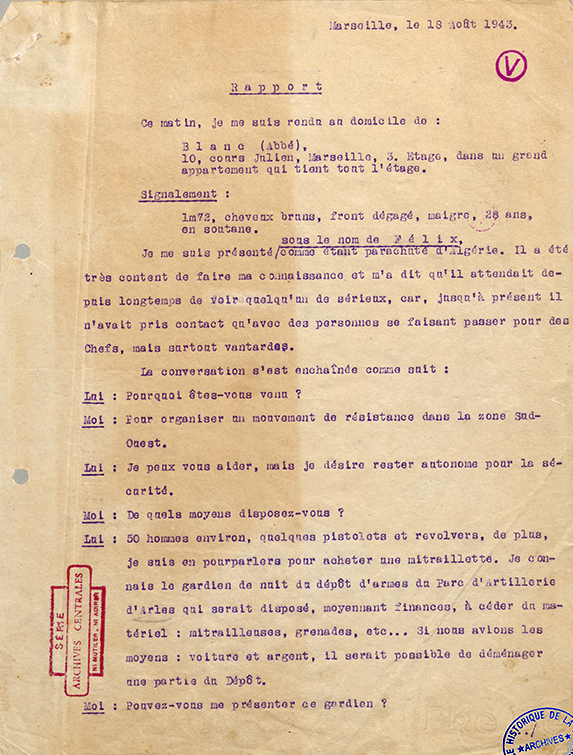
Rapport de l'agent de l'Abwehr Léon Charles Brown, alias Charles, 18 août 1943, p. 1.
© SHD
